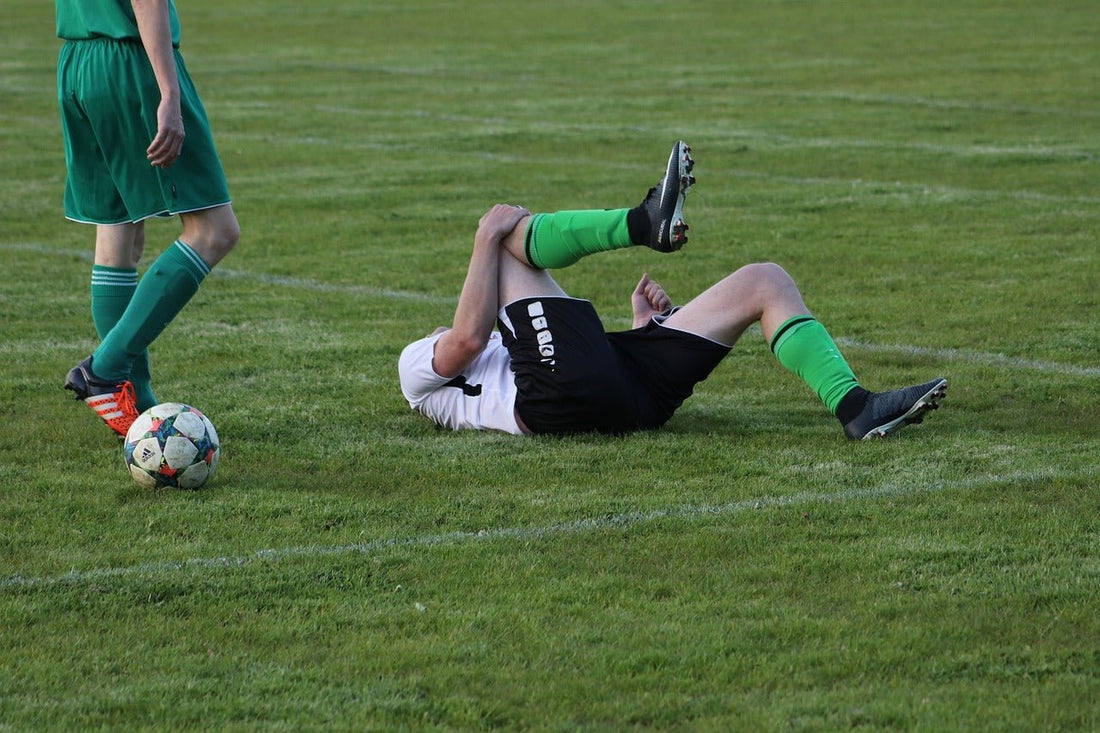
Accelerating Sports Injury Recovery with Light Therapy: A Review of Photobiomodulation Research
Share
Athletes, both professional and amateur, frequently encounter sports injuries such as muscle strains, sprains, and tendonitis. Photobiomodulation, also known as light therapy, has emerged as a promising non-invasive and drug-free treatment to accelerate recovery from these injuries. This article will explore the science behind light therapy for sports injury recovery and highlight five influential research papers that have shaped our understanding of its effectiveness.

How Light Therapy Supports Sports Injury Recovery
Light therapy uses specific wavelengths of light, typically in the red and near-infrared spectrum, to stimulate cellular processes within the body. When tissue absorbs light at these wavelengths, it triggers a series of events at the cellular level, enhancing the body's natural healing processes. The key mechanisms involved in sports injury recovery through light therapy include:
- Increased cellular energy production: Light therapy stimulates mitochondria, the cell's energy-producing structures, to produce more adenosine triphosphate (ATP), which fuels various cellular processes, including tissue repair and regeneration.
- Reduced inflammation: Light therapy can decrease the production of pro-inflammatory cytokines, which contribute to inflammation and pain. This reduction in inflammation is crucial for the healing process and recovery.
- Enhanced blood circulation: Light therapy increases blood flow and circulation, providing tissues with more oxygen and nutrients while removing waste products. This improved circulation further supports the healing process and reduces inflammation.
- Stimulated collagen production: Light therapy promotes the synthesis of collagen, a structural protein essential for the repair and regeneration of connective tissues such as tendons, ligaments, and muscles.
Four Influential Research Papers on Light Therapy and Sports Injury Recovery
1. Leal-Junior, E. C. P., Lopes-Martins, R. Á. B., & Bjordal, J. M. (2014). Clinical and scientific recommendations for the use of photobiomodulation therapy in exercise performance enhancement and post-exercise recovery: current evidence and future directions. Brazilian Journal of Physical Therapy, 18(6), 471-479.
This comprehensive review discusses the clinical and scientific recommendations for using photobiomodulation therapy in exercise performance enhancement and post-exercise recovery. The authors summarize the current evidence and suggest future research directions to better understand the effectiveness of light therapy in sports injury recovery.
2. Tumilty, S., Munn, J., McDonough, S., Hurley, D. A., Basford, J. R., & Baxter, G. D. (2010). Low-level laser treatment of tendinopathy: a systematic review with meta-analysis. Photomedicine and Laser Surgery, 28(1), 3-16.
In this systematic review and meta-analysis, the authors examine the effectiveness of photobiomodulation in treating tendinopathy. The analysis included 25 randomized controlled trials, showing that LLLT was more effective than placebo in reducing pain and improving function in individuals with tendinopathy.
3. Leal-Junior, E. C. P., Vanin, A. A., Miranda, E. F., de Carvalho, P. T. C., Dal Corso, S., & Bjordal, J. M. (2015). Effect of phototherapy (low-level laser therapy and light-emitting diode therapy) on exercise performance and markers of exercise recovery: a systematic review with meta-analysis. Lasers in Medical Science, 30(2), 925-939.
In this systematic review and meta-analysis, the authors investigated the effects of phototherapy, including low-level laser therapy and light-emitting diode therapy, on exercise performance and markers of exercise recovery. The analysis included 32 randomized controlled trials, revealing that phototherapy was effective in enhancing exercise performance and accelerating post-exercise recovery.
4. Baroni, B. M., Leal Junior, E. C., De Marchi, T., Lopes, A. L., Salvador, M., & Vaz, M. A. (2010). Low level laser therapy before eccentric exercise reduces muscle damage markers in humans. European Journal of Applied Physiology, 110(4), 789-796.
This study investigated the effects of low-level laser therapy on muscle damage markers in humans following eccentric exercise. The results demonstrated that applying low-level laser therapy before exercise significantly reduced muscle damage markers, suggesting that light therapy could help prevent sports injuries and speed up recovery.
Conclusion
Photobiomodulation, or light therapy, has shown promise as a non-invasive, drug-free solution for accelerating recovery from sports injuries such as muscle strains, sprains, and tendonitis. The research highlighted in this article represents just a small portion of the growing body of evidence demonstrating light therapy's effectiveness in reducing inflammation and promoting tissue repair, ultimately leading to faster recovery.
As our understanding of the underlying mechanisms and optimal treatment parameters for light therapy continues to evolve, it is essential to stay informed about the latest research developments. By doing so, healthcare professionals, athletes, and individuals seeking effective sports injury recovery solutions can make informed decisions about incorporating light therapy into their treatment plans. With the ability to improve both performance and recovery, light therapy is undoubtedly a valuable tool in the realm of sports injury management and recovery.
For more on sports recovery, read:
